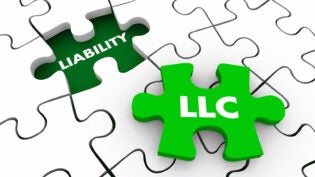
One of the most important choices you’ll make as a business owner is choosing a name for your business. Your name is the face of your brand and conveys what it stands for.
So, how do you go about selecting a memorable one? If you have $50,000 to spend on a top-tier naming company, go for it. But if you don’t, here are a few tips I’ve gathered from my experience naming five businesses (and choosing my own name, Adelyn).
Step 1: Brainstorm Ideas and Seek Inspiration
First, think about what you want your company to be and what you want your brand to represent. Then, let your imagination run wild. Think of your favorite words (going through a dictionary is fair game) or words in foreign languages (though these may already be taken by others in that country). Go back to Greek mythology, history books and English literature. Think of your favorite phrases, concepts, etc. If you have some time, you can even keep notes of names you like, whether it’s a street, a place, another business, etc. These days, you can even combine words to form something new. For example, the New York City neighborhood SoHo came from “South of Houston Street” and is now one of the trendiest areas in the city.
Step 2: Test for Pronunciation, Spelling and Memorability
Once you have a list of potential names, run through the checklist below. Your name doesn’t have to meet all these criteria, but it’s good to at least hit most of them.
- Is it easy to spell? Can customers find you online and share your name with others?
- Is it easy to pronounce?
- Is it easy to type on a mobile phone?
- Is it memorable?
- Does it start with a letter at the beginning of the alphabet? (Should you be featured in an alphabetical list, you’ll automatically be at the top!)
- Does it refrain from translating as something strange or inappropriate in a foreign language? (This is especially important in today’s globalized world. Check out some ofthese names for inspiration on what not to do.)
- Does it refrain from having a negative or controversial connotation? (For example, my friend John’s hiring company used to be called HiredGun. He had to change it because some took offense to the word “”)
Step 3: Check URL and Social Media Availability
Now take the words and names that made it through the checklist and see if they are available as a URL. A strong, simple and memorable URL is key to a successful business.
These days it may seem like every decent URL is taken or being squatted on, which can be very frustrating. To get around this, many people use .io, .co, .vc and a whole list of other domains. I’ve found Instant Domain Search to be a clean and easy-to-use interface for searching URL availabilities.
Once you decide on a name and buy a .com URL, you may want to consider buying the other common domains associated with it, like .co, .net, or .org. You may not use them right away, but if you become a big brand in the future, you’ll end up needing them.
The next step is checking the availability of relevant Facebook pages, Twitter handles, Instagram names and so on. While not as vital as your URL, these are still important, as potential users will use them to find your business.
If all the basic names are taken, consider adding “Group,” “Team,” “Media,” “Labs,” or other terms after your name to get your desired URL. For example, Facebook started out as www.thefacebook.com before it became www.facebook.com, and Flatiron Health started as www.flatironhealth.com before it became www.flatiron.com.
Step 4: Collect Relevant User Feedback
The next step is taking your list of possible URLs and asking friends and family to rank their preferences. You can post your list on Facebook and tag friends whose advice you respect in order to get their thoughts, or you can create a free survey with SurveyMonkey and Google Forms and email it. If you have a specific audience demographic, survey random people who fit this demographic.
Step 5: Conduct a Trademark Search
If you have any plans to grow your business into a major brand, no matter how distant, this is an important step in ensuring you won’t run into legal issues. You can run a simple search on TESS, the U.S. Patent and Trademark Office’s trademark electronic search system, to see if another company in the same space has your name. If someone else has your name, don’t lose hope. According to trademark rules, two firms can have the same name if they are in very different fields and there is no risk of confusion. For example, there are 50-plus live trademarked companies with the word “popcorn” in their names.
After checking the trademark database, you should also check with your state to ensure there aren’t any other active businesses doing business with your name.
Once you’ve done all of the above, congratulations! You’ve found a great name for your new company. Now go celebrate this important step in the life of a business owner!
This article originally appeared on LinkedIn.
Author: Adelyn Zhou is the Co-Founder & Head of Marketing at TOPBOTS, a leading firm focused on the strategy, design and marketing of chatbots.












